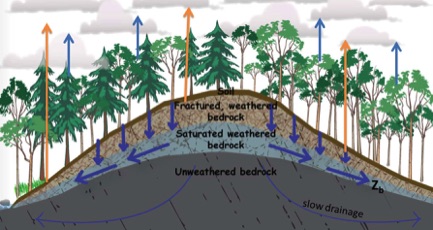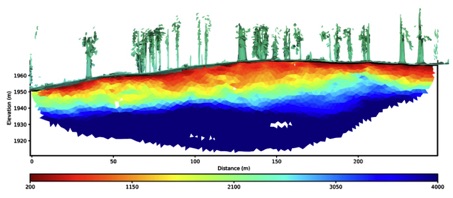
Critical Zone Geophysics
The critical zone (CZ) is shaped by geological, hydrological, physical, and biogeochemical processes that together transform fresh bedrock into weathered bedrock, saprolite, and soil—the life-sustaining “regolith” that blankets Earth’s surface. The subsurface processes and structures hidden beneath our feet have profound influence on the more familiar life and processes that surround us at the surface. The deep CZ is where rock first “feels” Earth’s surface; where minerals eroding to the surface first interact with reactive fluids and gases; where biota first interact with mineral surfaces; where porosity first opens; and where chemical and physical weathering commence.
One of the primary challenges to studying the critical zone is the fact that it's hidden beneath Earth's surface. It's not far down — a few meters to tens of meters — but just far enough that it's difficult to access. It seems "so close, yet so far" — which led Grant and Dietrich to dub the critical zone the "frontier beneath our feet." The only way to study it is to dig a pit, drill a hole, or probe it with remote sensing.
That's where critical zone geophysics comes in. Techniques like seismic refraction, electrical resistivity, and ground-penetrating radar send signals into the subsurface and record the Earth's response, giving us information about the distribution of physical properties in the critical zone. The results are landscape-scale maps of critical zone structure, which enable us to address open questions, like (1) How thick is the critical zone? (2) How much water can the critical zone hold? and (3) How and why does critical zone structure vary at the landscape scale?
A cartoon cross-section of the critical zone, from Grant and Dietrich (2017).


What the critical zone looks like to a geophysicist. The color scale is seismic velocity (the speed of sound), in meters per second. Dark blue colors (fast velocity) are intact, unweathered bedrock; red colors (slow velocity) are highly weathered, porous regions where water can be stored.